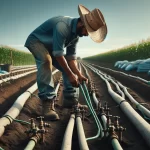Irrigation by sprinkling is a widely used method in agriculture and landscaping, which consists of dispersing water over the crop area or land in the form of small drops or “sprinklers”. These drops are sprayed by mechanical devices, known as sprinklers, which are designed to distribute the water evenly over the soil surface.
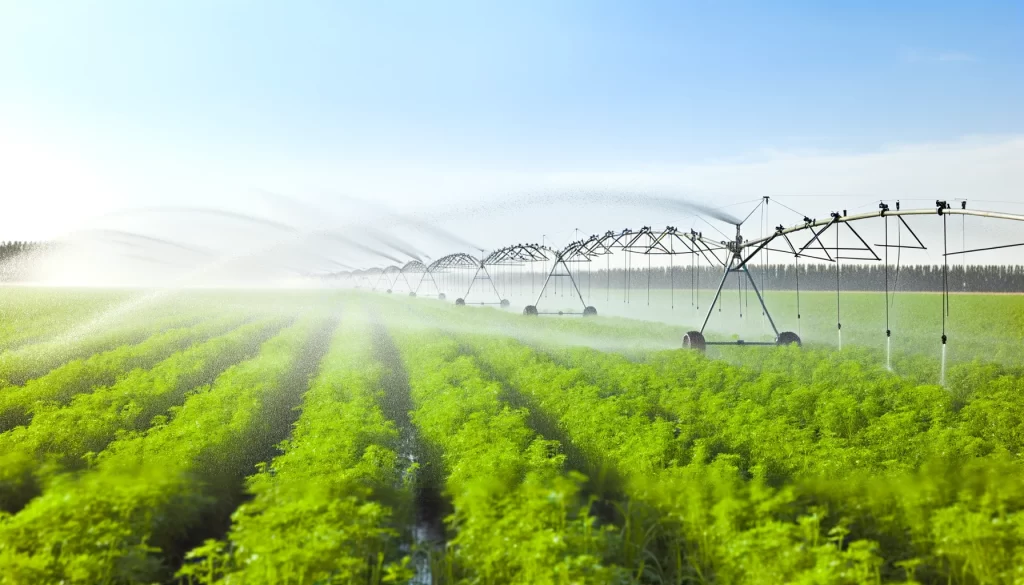
Components of the sprinkler irrigation system
- Sprinklers: These are the devices that disperse water over the irrigation area. There are various types of sprinklers, including fixed, rotors, and pop-up sprinklers.
- Pipes and conduits: They transport water from the water source to the sprinklers. They can be buried pipes or surface conduits, depending on the system configuration.
- Valves: They control the flow of water in the irrigation system, allowing specific sections to be turned on and off as needed.
- Filters: They are used to remove solid particles from the water and prevent them from clogging the sprinklers.
- Pumps: In larger-scale sprinkler irrigation systems, pumps may be used to increase water pressure and ensure uniform distribution.
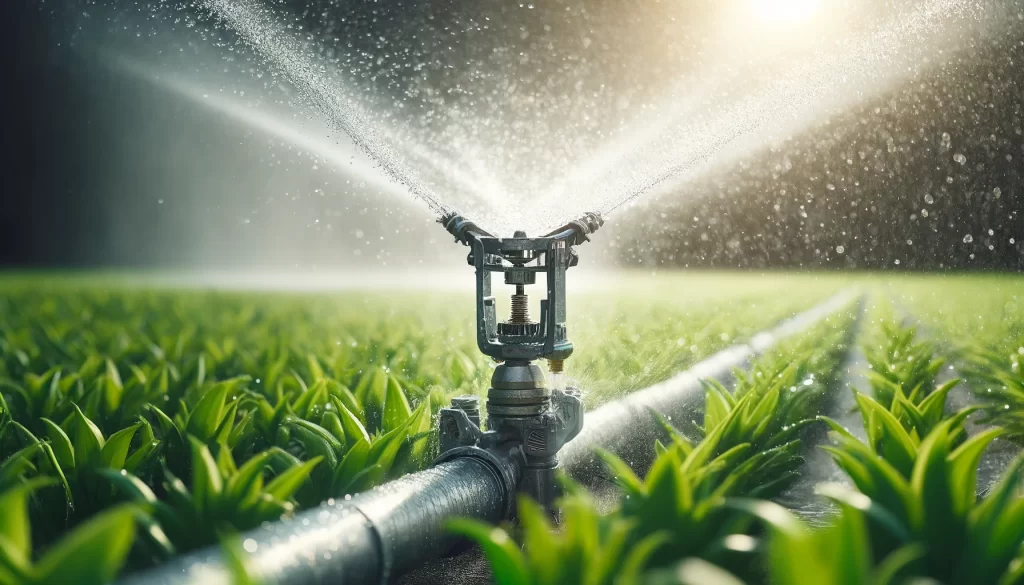
Advantages of sprinkler irrigation
- Uniform distribution: Sprinklers distribute water evenly over the soil surface, ensuring complete coverage and efficient absorption by plants.
- Flexibility: Sprinkler irrigation systems can easily adapt to different types of terrain and crops, and can be configured for scheduled or automatic irrigation according to user needs.
- Reduction of manual labor: Automated sprinkler irrigation systems can significantly reduce the labor required for irrigation, allowing farmers and landscapers to focus on other important tasks.
- Water conservation: When designed and operated properly, sprinkler irrigation systems can be quite efficient in water use, minimizing losses due to evaporation and runoff.
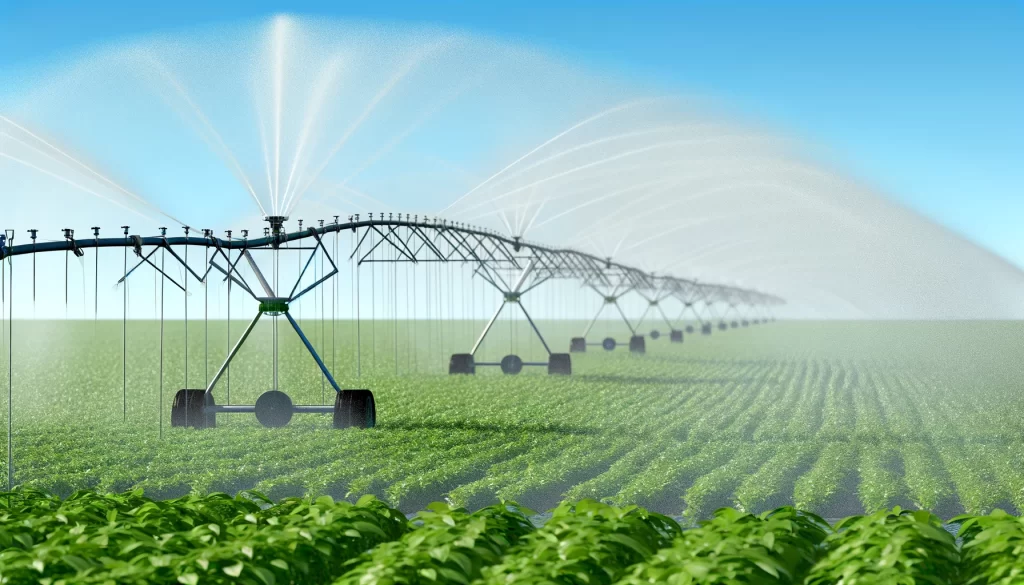
Challenges and considerations
- Initial cost: Installing a sprinkler irrigation system can be expensive, especially compared to simpler irrigation methods such as gravity irrigation.
- Energy consumption: In sprinkler irrigation systems that require pumps to increase water pressure, energy consumption can be a significant consideration.
- Maintenance: Sprinkler irrigation systems require regular maintenance to ensure optimal operation, including cleaning of sprinklers, repairing leaks, and replacing worn parts.
Despite these challenges, sprinkler irrigation remains a popular and effective option for irrigating crop areas and landscapes, thanks to its ability to provide uniform and controlled water coverage, as well as its flexibility and convenience.
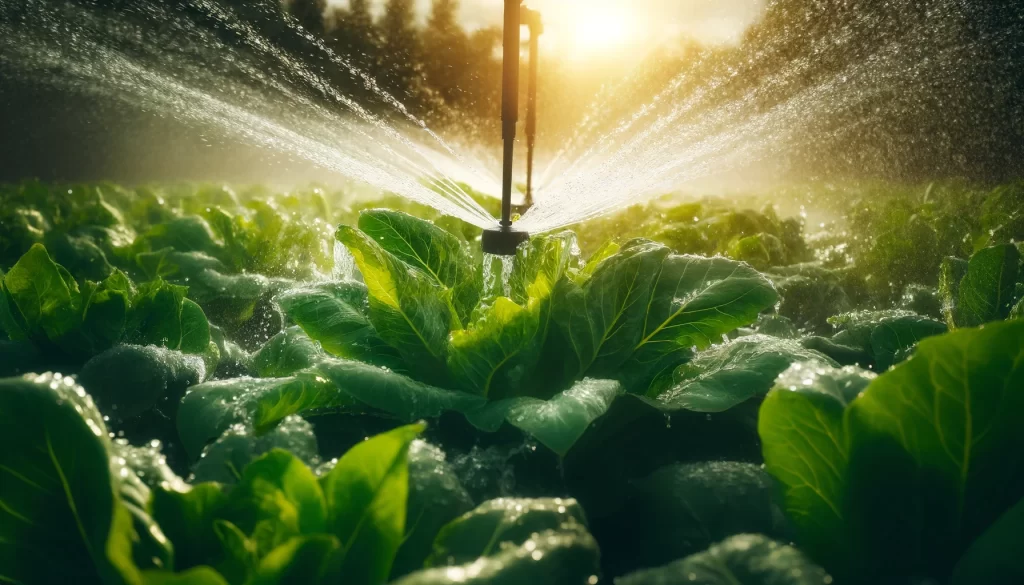
General process of sprinkler irrigation
- System preparation:
- Before starting irrigation, it is ensured that the sprinkler irrigation system is in good working condition. Sprinklers, pipes, valves, and any other components are checked for possible leaks, obstructions, or damage.
- System activation:
- The sprinkler irrigation system is turned on, either manually or through a programmed automatic timer. This activates the pumps (if necessary) and opens the valves to allow water to flow to the sprinklers.
- Water distribution:
- Water is pumped from the water source, such as a well, reservoir, or distribution network, through the irrigation system pipes.
- Water travels along the pipes and is directed to the sprinklers installed in the irrigation area.
- When water reaches the sprinklers, it is expelled in the form of small drops or jets that are dispersed over the soil surface.
- Sprinkler operation:
- Sprinklers are designed to spray water in a specific pattern, which can be circular, rectangular, or irregular, depending on the type of sprinkler and system configuration.
- Some sprinklers have adjustable nozzles that allow control of the distance and direction of water spray.
- Uniform coverage:
- Sprinklers rotate or move along a predefined pattern to ensure uniform distribution of water over the irrigation area.
- Water pressure and sprinkler rotation speed are adjusted to suit the specific irrigation needs of each area and crop type.
- Irrigation duration:
- Irrigation time is set according to the water needs of crops or landscape, as well as local weather conditions.
- Irrigation time is monitored to avoid over-irrigation, which can cause soil waterlogging and water loss through runoff.
- System shutdown:
- Once the scheduled irrigation time is completed, the sprinkler irrigation system is turned off.
- Valves are closed to stop the water flow, and pumps are turned off (if necessary).
- Maintenance and adjustments:
- Regular maintenance of the sprinkler irrigation system is performed to ensure optimal operation and prevent issues such as clogging, leaks, or damage.
- Adjustments are made as necessary to water pressure, irrigation time, and sprinkler configuration to optimize system efficiency.
 AgronoBlog – Agriculture Blog
AgronoBlog – Agriculture Blog 